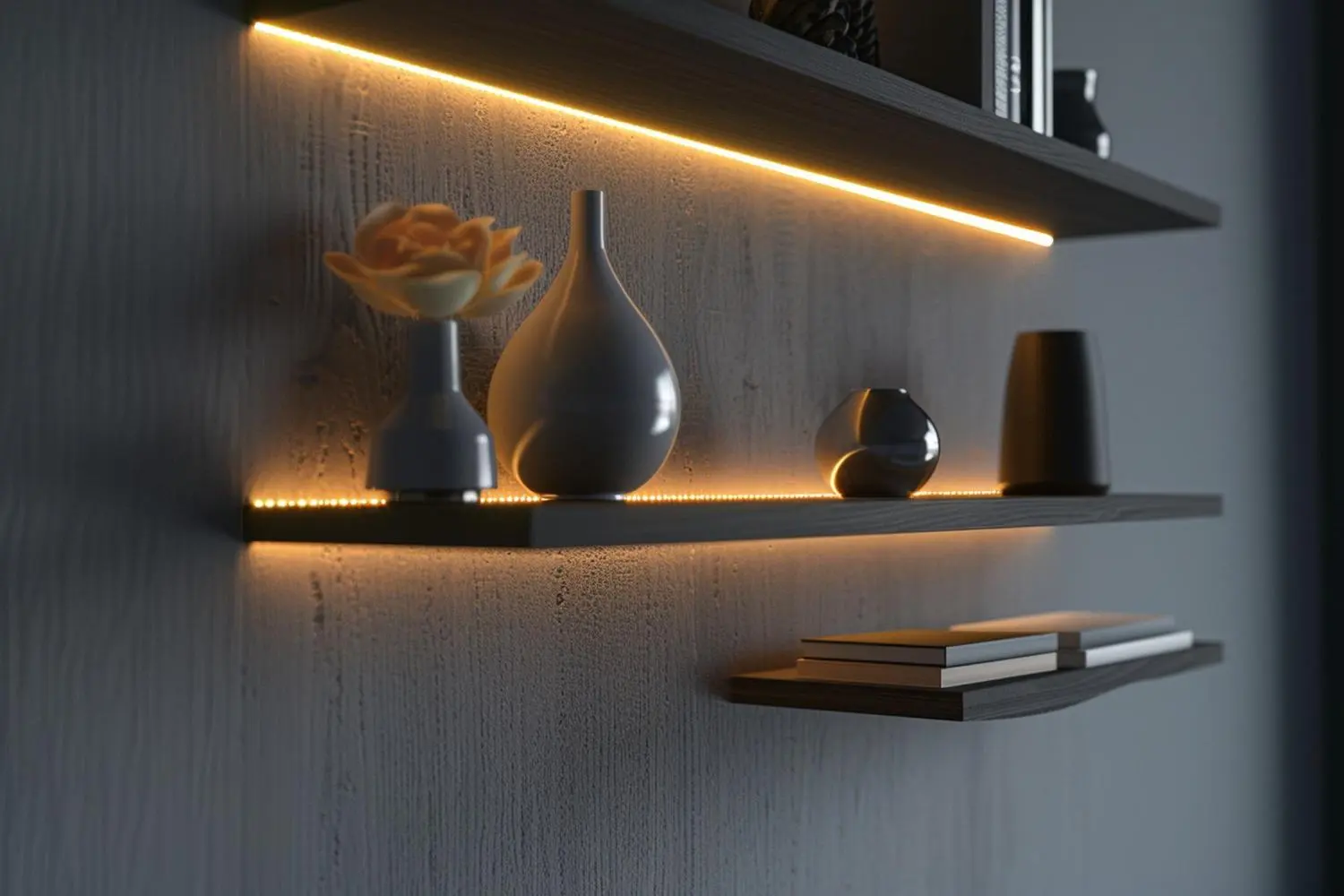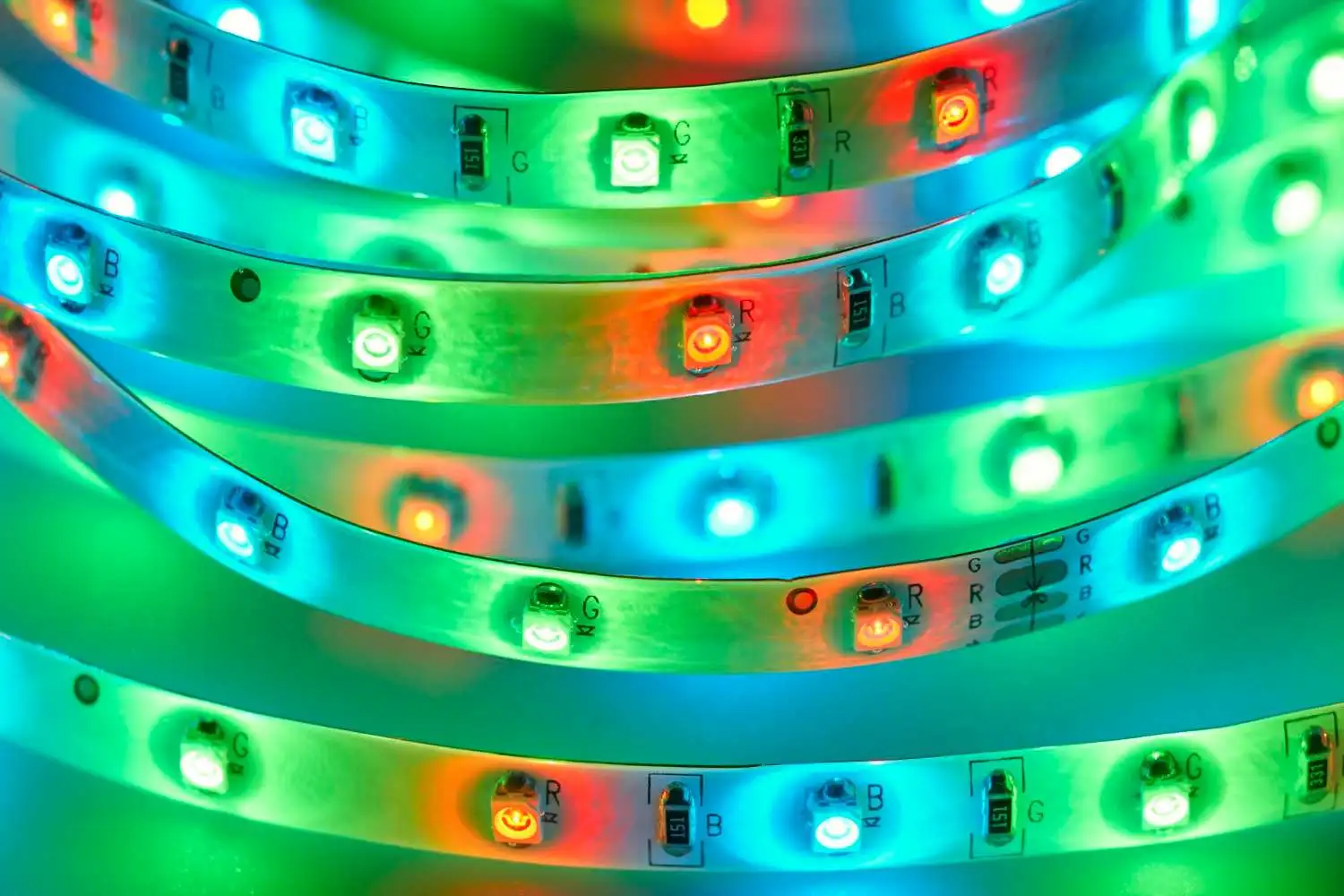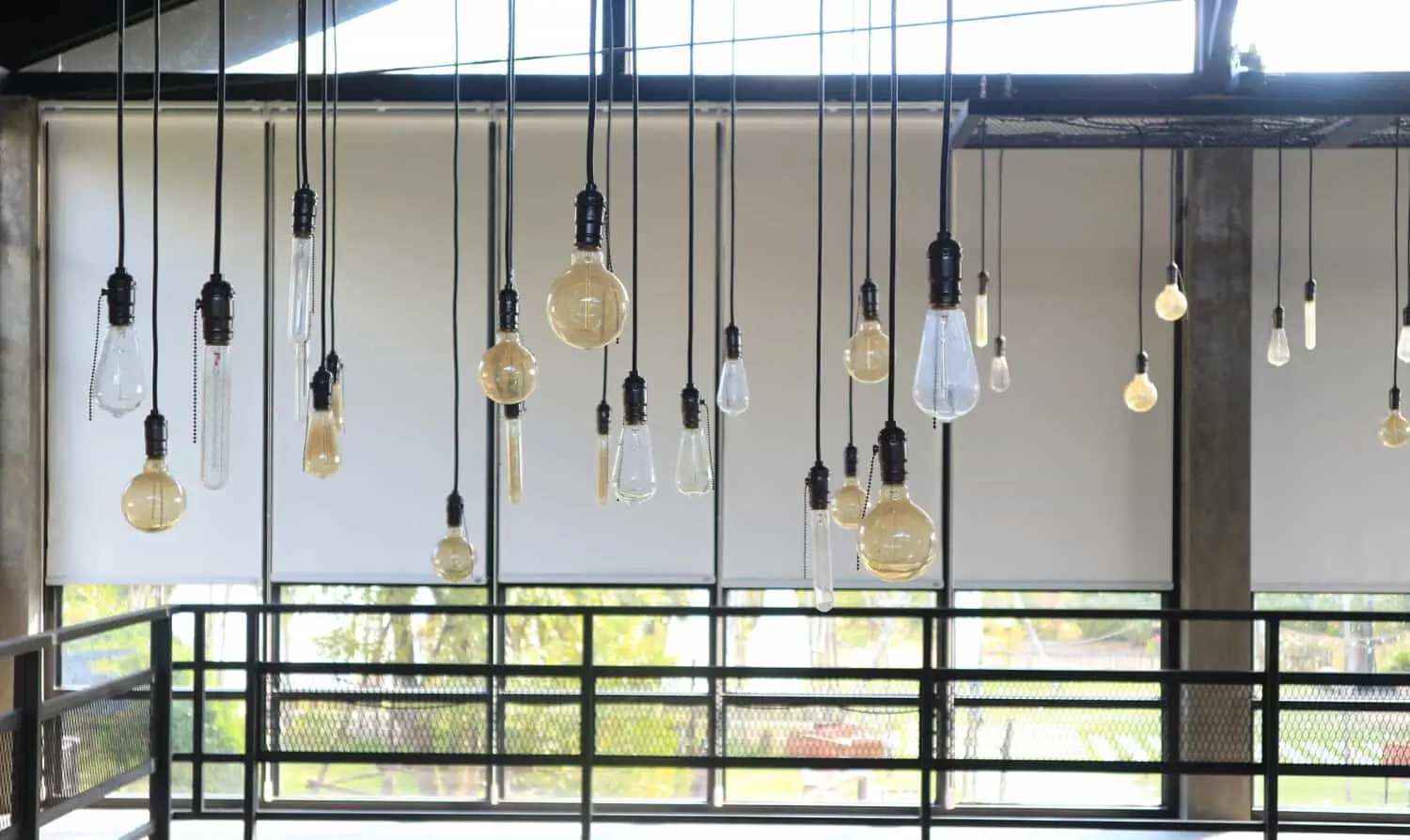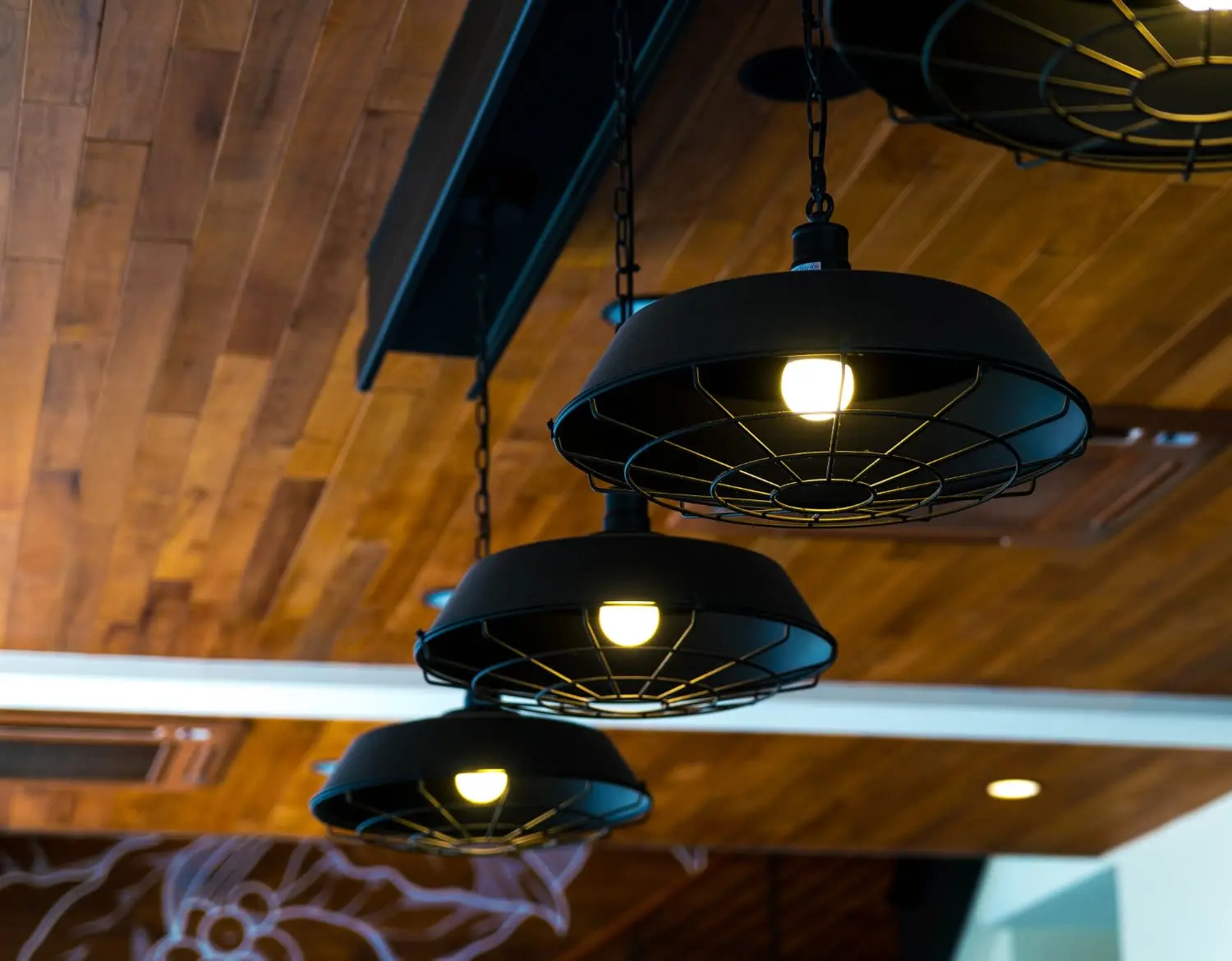
The Ultimate Guide to Built-In Shelf Lighting
Explore guide to built-in shelf lighting. Learn about LED strips, puck lights, recessed lights, tape lights, and their installation tips for perfect ambiance.
You cannot ignore the fact that we need colored lights to create an irresistible ambiance around our audience while they are enjoying their favorite stage performance. It is also natural to ignore the role of colors when these lights function in our routine life.
Undoubtedly, colors are all around us, making our lives beautiful. Due to this reason, it is essential to study their part in making stage lights perform naturally. Vorlane is talking about stage light color combinations and will discover the phenomenon behind them through this post.
There is a clear difference between a stage performance with impactful lights and one without lights that can bore the spectators to death. We are relying on these stage lights because they are easy to handle, and we can make them switch between different colors to create multiple psychological impacts on the audience.
These are core assets for setting the mood for a particular stage play so the audience can relate to it more and develop a deeper connection with the story and the characters.
The same applies to the audience attending a live event and a concert. The lights used in this scenario can also change colors. Due to this reason, people find it quite thrilling and enthusiastic to attend a show since lights play a crucial role in this regard.
So, let’s start with our discussion and determine how to use these lights in different cases best. Also, you will learn about the importance of varying stage light color combinations.
Today, technology empowers these lights to shift between multiple colors. From more relaxed to warmer tones, we can fix various colors for a particular stage performance. Sometimes, we can use a single color or couple it with others to amplify the impact we need to captivate the audience. These lights become highly dependable when we aim to use color pairs in theatrics and concerts.
We take color temperature in degrees Kelvin. The purpose of determining the color temperature is to see how much heat it produces. Sometimes, this heat can interrupt the performance of a color during an ongoing activity.
The heat changes in color can also alter its hues; therefore, it is always beneficial to measure its color temperature beforehand during the stage inspection phase. If an object is metallic and black, it can get hot quickly, and those colors that produce white light are more likely to have a higher color temperature than the others. In the case of those colors with lower color temperatures, they mostly have a blue color range.
So, as the color changes from blue to red and orange, it shows that the temperature is going higher simultaneously. Therefore, colors having a low temperature are warmer and vice versa. Thus, the relationship of temperatures with the colors is essential for captivating your audience and using different color combinations per an ongoing stage performance. This is how we can easily control the psychological impact on our spectators by carefully regulating stage lights’ colors.
When we are using green light, it means we are focusing on growth and nature during a performance. Green color relates to a fresh and rejuvenating feeling. It depicts how something grows and develops until it becomes something more significant. This concept can also be valid for a person’s real life.
Most productions use green light to focus on gardens and forests to draw the audience’s attention towards an eco-friendly and greener ambiance through a stage play.
Blue is a soothing color; therefore, we use blue for its calm and relaxing effect on our brain. It is a highly subtle color and depicts silence and tranquility. Coupling different shades of blue and showcasing a particular concept through it will not be wrong.
Blue is a good color when you want to grab their attention towards night, water, and something that is a source of peace and silence. Well, how you will use blue lights depends on the setting and mood of a particular performance. Blue also goes well when you are narrating a story that takes place in winter.
Purple lies between the colors of blue and red. It is an excellent combination of the attributes of red and blue colors. We link purple with luxury and mystery. Due to this reason, many fictitious content uses purple to depict witchcraft and magic. It is a sophisticated color and can also be used to highlight romance.
Purple is dependable when depicting romance and grandeur during a scene. It can be related to anything. It can be a human as well. Also, this standard color has secured its place in fictitious settings and stage plays.
It is evident that white is a symbol of purity and peace. The shades of white bring a soothing and transparent effect. It also depicts simplicity. If tackled carefully, we can strike a perfect balance through white during an intense scene.
We have to be careful while using white shades through stage lights. Sometimes, their contrast needs to be corrected, and we can ruin the impact of an entire stage play for the audience. Therefore, the usage of white entirely depends on the message behind a story.
Red is an intense color that indicates romance, passion, and sometimes danger. Therefore, it is a versatile color, and we can also use it to increase the drama element of a performance. It is also among a few colors that quickly grab your attention regardless of the emotion.
Red is the best option to stimulate any emotion ranging from danger to romance. Sometimes, it performs well for focusing on sunrises and sunsets.
These are dependable colors when you want to amplify the touch of a message behind a performance. However, it is essential to fully understand this message and relate appropriate colors with it to avoid complications. Combining these colors in pairs can also be persuasive for the audience. It can make them discouraged while involving suspense among them if leveraged smartly.
Crafting the perfect color scheme for stage lighting is an art, but it’s not without its hurdles. Here’s how the pros tackle common challenges, turning limitations into creative triumphs.
Sometimes, the grand vision in your head bumps into the reality of what’s technically possible. The key? A tight-knit collaboration with your tech team. Understanding your tools’ limits lets you tweak your vision into something dazzling yet doable.
Every stage tells a different story, especially with lighting. Before you set your heart on a color scheme, get to know the venue. Adaptable fixtures and a bit of on-site fine-tuning ensure your colors shine true, no matter the setting.
Juggling colors to match a story’s ebb and flow is tricky. Detailed lighting scripts are your best friend, mapping out each hue’s entrance and exit. Rehearsal tweaks make these transitions seamless and story-driven.
Dream big, spend smart. When funds are tight, focus on the lighting elements that pack the biggest punch. Sometimes, less is more, and creativity can stretch a dollar into dazzling effects.
A kaleidoscope of colors can overwhelm rather than enhance. Use colors purposefully, spotlighting the narrative’s heart. And remember inclusivity in design means considering how everyone experiences your color choices, ensuring the show resonates with every viewer.
In the world of stage lighting, challenges are just opportunities in disguise. With a dash of creativity and collaboration, any hurdle can lead to innovation, making every performance unforgettable.
At the forefront are LED lights, celebrated not just for their brilliance but for their energy efficiency. These luminaries consume a fraction of the power traditional bulbs do, significantly cutting down on energy bills and carbon emissions.
The adoption of smart lighting control systems marks another leap forward. These systems fine-tune lighting levels and effects with precision, ensuring not a watt is wasted. It’s about having light only when and where you need it.
The push for sustainability has also sparked creativity in design. Reusable and modular lighting fixtures are now in vogue, designed to be easily adapted or repurposed for various productions, reducing waste and encouraging a more sustainable lifecycle.
Solar-powered lighting solutions are breaking ground, especially for outdoor performances. Harnessing the sun’s energy, these systems offer a clean, renewable power source, further lessening the industry’s environmental footprint.
So, this is how you can use stage light color combinations to give your audience an unforgettable experience. This guide is all about using these colors strategically so that they can help you captivate your audience at a much deeper level. However, you must be careful while picking the colors since they must relate to a particular scene you use to convey your message.

Explore guide to built-in shelf lighting. Learn about LED strips, puck lights, recessed lights, tape lights, and their installation tips for perfect ambiance.

Explore the Global LED Lighting Market Report 2024 for insights on trends, growth drivers, and key players in the industry, including product segment and geographic

Learn how to wire a 2-way light switch effectively. This guide covers essential tools, step-by-step instructions, and safety measures for an installation.

Choosing the right power supply for LED strip lights ensures performance and safety. Consider voltage, current, wattage, efficiency, and certifications.

Discover the benefits of pendant lighting for your home. Learn about various styles, and their uses in enhancing aesthetics and functionality.

Discover top ceiling lights for your home, including pendant lights, chandeliers, flush-mounts, recessed, track lighting, cove lighting, and spotlights.



 | This LED Industry Research Report Is Worth 10,000 Dollars!Want to get reliable industry data to support your LED business planning? In this report, you will:
*Submit your email to download this file. Your personal info will not be shared to any 3rd-party person or organizations. |
WhatsApp us
*We respect your confidentiality and all information are protected.